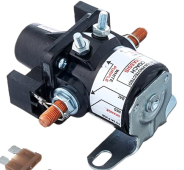mustangbob
New Member
- Joined
- Mar 27, 2021
- Messages
- 8
I have a Chevy Express Van that I have installed a solar system on. The system has 400W of panel, Victron Solar Charge Controller, 300 AH of Lithium Battle Born battery, a 3000w Victron Inverter Charger along with Shore Power capability. I am now ready to install the above Victron DC-DC Isolated Smart Charger. The Van has a factory installed isolated auxiliary battery. The aux battery is the same size as the main chassis battery. The Van also has a HD Alternator which I suspect is considered to be a Smart Alternator?????? Due to the location of the Auxiliary Battery I would like to hook the DC -DC Charger to the Auxiliary Battery rather than running to the front chassis battery. My logic is that by doing so I will gain and extra layer of protection for the alternator by using the Auxiliary Battery. I have no other loads depending on the Aux Battery. Is my thinking correct or am I off base? The supplier I purchased my equipment from is saying yes, I can hook to either battery. Thanks for your input.



